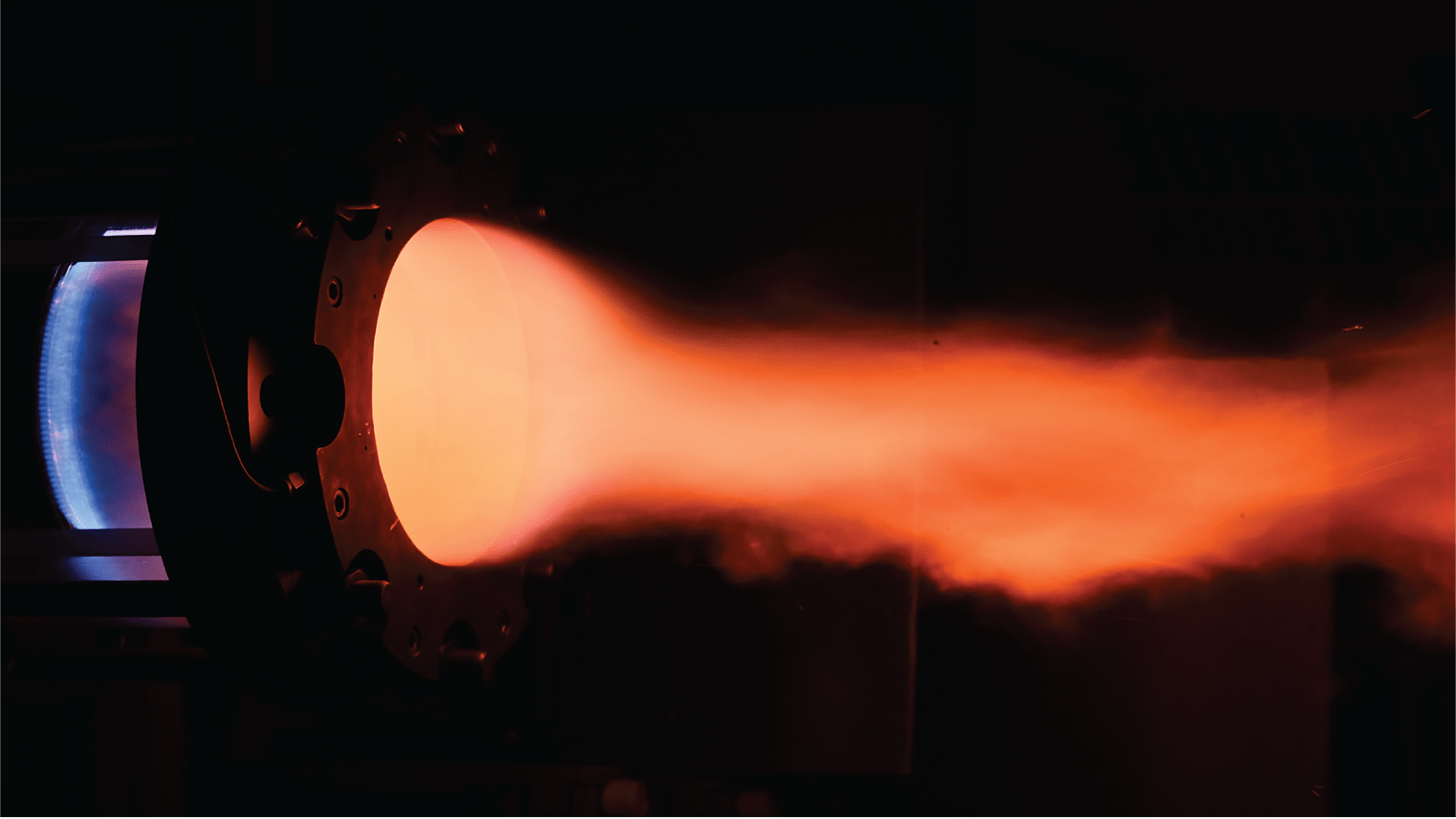Stay Up to Date
Submit your email address to receive the latest industry and Aerospace America news.
The Pressure Gain Combustion Technical Committee advances the investigation, development and application of pressure gain technologies for improving propulsion and power generation systems and achieving new mission capabilities.
In response to growing government demand for enhanced combustor efficiency and the aerospace sector’s quest for improved performance with reduced combustor weight and volume, research into rotating detonation engine, or RDE, technology saw significant research and development efforts this year across academic and commercial institutions. In June, the European Space Agency organized a three-day workshop aimed at consolidating academic and commercial initiatives focused on technologies for advanced propulsion applications, including RDEs, and to build a cohesive research road map for the European Union.
Under the U.S. Department of Energy’s University Turbine Systems Research program, Purdue University in Indiana and Argonne National Laboratory in Illinois developed a hydrogen-air RDE with innovative nozzle guide vanes for power generation. Research throughout the year involved assessing combustor losses through a combination of laser diagnostics and numerical models, including large- eddy simulations and unsteady Reynolds-averaged Navier-Stokes, as well as utilizing reduced-order models. Plans call for retrofitting a Rolls-Royce M250 engine with a hydrogen-powered RDE in 2024.
Optical diagnostic techniques played a pivotal role in driving rapid advancements of RDE technology. In March, researchers from the U.S. Air Force Research Laboratory, Argonne National Lab and University of Alabama in Huntsville characterized monodisperse droplet breakup and burning in Argonne’s Advanced Photon Source X-ray facility. They imaged shock and detonation interactions for rocket-grade kerosene and water at 5 million frames per second at a scale of 30 to 200 micrometers, revealing complicated breakup physics. In February, Ohio-based Spectral Energies and Purdue University, in collaboration with NASA’s Glenn Research Center in Ohio, developed 2 Mfps planar laser-induced fluorescence, or PLIF, of fuel and hydroxyl radicals to study the transient liquid spray response from hydrogen-air rotating detonations, providing benchmark data for validating models. In May, this research team also applied megahertz-rate PLIF in variably premixed hydrogen-air and natural gas-oxygen rocket RDE to assess parasitic deflagration for a wide range of operating conditions. The optical RDE platforms and tenfold improvement in measurement speed represent a new capability for physics-based understanding of rotating detonations.
In July, a University of Michigan computational research team developed a state-to-state RDE model to identify loss mechanisms. The team applied machine learning algorithms to estimate various performance parameters. To assess how geometry influences RDE injector performance, the Michigan researchers investigated a series of combustor channel shape and inlet area ratios between late 2022 and early 2023. They quantified the degree of blockages at the inlet relative to the mean operating conditions and identified a limiting behavior for the dependence on inlet blockage ratio to mean mass flow rate. They also performed particle tracking velocimetry to quantify the azimuthal flow swirl at the inlet and outlet of the RDE. They observed that coupling between the oxidizer inlet and the detonation wave induces secondary azimuthal flow that affects the propagation and properties of the detonation wave.
In space propulsion, in Japan, Nagoya University, the Muroran Institute of Technology, Keio University and the Japan Aerospace Exploration Agency in May operated a laboratory-scale ethanol-nitrous oxide RDE for rockets. In July, the prototype flight model was completed, and plans call for launching it aboard a sounding rocket in July 2024. In September, NASA’s Marshall Space Flight Center in Alabama, with partners Venus Aerospace of Texas, NASA Glenn and the Air Force Research Laboratory fired a 2-inch water-cooled RDE, gathering scalability data for Venus’ planned hypersonic aircraft engine technology demonstrator.
In August, a dataset of a model detonation combustor was published in the journal Scientific Reports. This work, conducted under the AIAA Model Validation for Propulsion, is part of an ongoing initiative to standardize experimental and computational procedures and analysis techniques.
Contributors: Venkat Athmanathan, Eric Bach and John W. Bennewitz
Stay Up to Date
Submit your email address to receive the latest industry and Aerospace America news.




